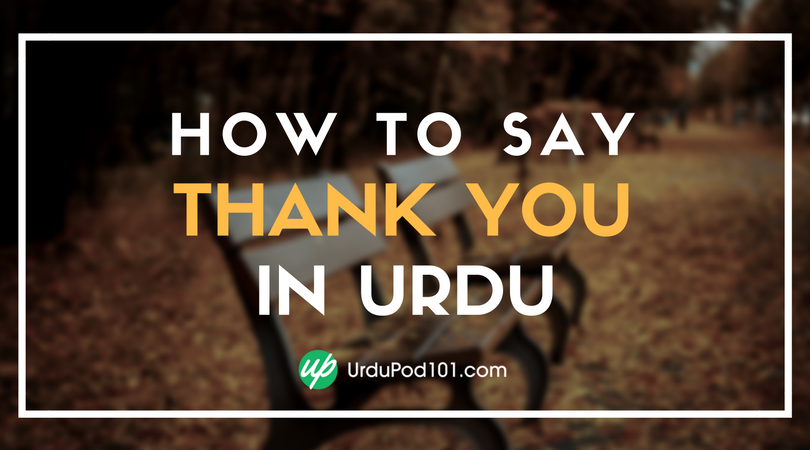
Culture defines a nation’s society. Not only does it contextualize the multiple perspectives contained within that nation, but it also influences how people live, behave, engage, and communicate with others. As such, studying a nation’s culture will provide you with the framework you need to make the most of your travels there. It’s also a great opportunity to broaden your horizons by exploring cultural traits unfamiliar or foreign to you.
While exploring the cultural background of Pakistan, you’ll find its society to be a montage of various cultural and ethnic values of different provinces. Its unique sociopolitical, gastronomic, cultural, historical, and artistic identities are certainly a sight to behold!
In this Pakistani culture introduction, you’ll gain a wealth of information regarding Pakistan and its culture. We will cover a range of topics, from the political culture of Pakistan to its most popular foods and customs.
Let’s get started.
 Table of Contents
Table of Contents
- Values and Beliefs
- Philosophies and Religions
- Family and Work
- Art and Sports
- Food
- Traditional Holidays
- Conclusion
1. Values and Beliefs
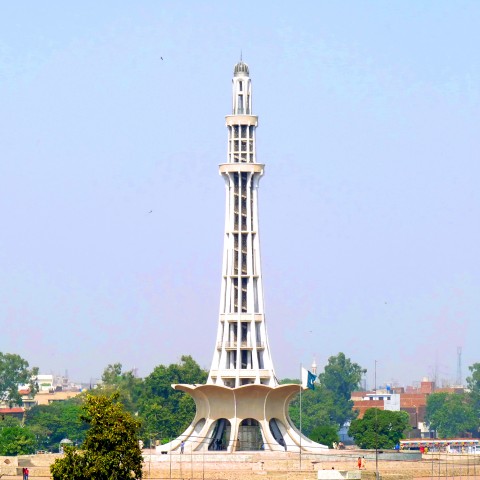
While Pakistan is not a ‘melting pot’ nation, it does feature numerous provinces and sub-regional cultures with their own sets of traditions. This creates a kaleidoscope of customs that reflects our unity in diversity. Let’s take a look at how this ‘kaleidoscope’ applies to the values and beliefs held throughout Pakistan.
A- The Cultural Kaleidoscope of Pakistan
What comes to mind when you think of the ‘typical’ Pakistani? A man wearing a شلوار، قمیض، شیروانی (shalwar, qameez, sherwani) and speaking the Urdu language? If so, you’re not necessarily wrong. But to really understand Pakistani culture and society, you must dig deeper. There is a lot of diversity to be discovered!
In Pakistan, each province contributes to enriching our cultural kaleidoscope without compromising its own unique indigenous identity. To give you a clearer picture of what this Pakistani cultural diversity looks like, let’s have a brief look at life in the different cultural regions throughout the Islamic Republic of Pakistan.
Punjab
Population-wise, پنجاب (Punjab) is Pakistan’s largest province. The language spoken here is Punjabi. It is customary for the men of Punjab to wear shalwar and qameez, though you can also find a large number of men wearing pants and a shirt in the metropolitan areas. Women wear شلوار، قمیض، دوپٹہ (shalwar, qameez, dupatta). Traditional men still cover their heads with a پگڑی (pagri), or turban.
Sindh
Sindh is another provincial unit of Pakistan with its own unique history, culture, and language. The language spoken here is Sindhi. In addition to the شلوار قمیض (shalwar, qameez) mentioned earlier, men of Sindh also wear a سندھی ٹوپی (Sindhi topi), or Sindhi cap, or a shawl called اجرک (ajrak). Like Punjabi women, Sindhi women also tend to wear شلوار، قمیض، دوپٹہ (shalwar, qameez, dupatta).
Balochistan
Territorially, Balochistan is the largest province of Pakistan. Due to its remoteness, it is quite orthodox and more traditional in its cultural approach. People in this region live in tribes, and the province’s indigenous language is Balochi. Men wear شلوار، قمیض، بلوچی پگڑی (shalwar, qameez, Balochi pagri), while women wear a headscarf, a long upper dress, and a shalwar.
Khyber Pakhtunkhwa
Khyber Pakhtunkhwa is the North-West Frontier Province of Pakistan, and it parallels the traditionalist and orthodox approach of Balochistan. Khyber Pakhtunkhwa also features a tribal system in which people prefer living in tribes and clans. Men wear شلوار، قمیض، پختون پگڑی (shalwar, qameez, Pakhtoon pagri) and women wear فراک پرتوگ (firaq partug), which is a Pashtun type of shalwar and qameez.
B- Motto & Slogan
Even though there is much diversity in the ways of living of these major provincial units, Pakistanis are bound together with a common motto and slogan.
ایمان، اتحاد، تنظیم (Iman, Ittihad, Tanzeem) – Faith, Unity, Discipline
ایمان، اتحاد، تنظیم (Iman, Ittihad, Tanzeem) translates to “Faith, Unity, Discipline.” This motto has become the unifying force among Pakistanis. It was put forward by the nation’s founder, Quaid-e-Azam Muhammad Ali Jinnah, whom Pakistanis revere as the father of the nation.
پاکستان زندہ باد (Pakistan Zindabad)
The national slogan of Pakistan is پاکستان زندہ باد (Pakistan Zindabad), meaning “Long Live Pakistan.” It is customary to raise this slogan at all national festivities to ensure patriotism and strengthen the nation’s unity.
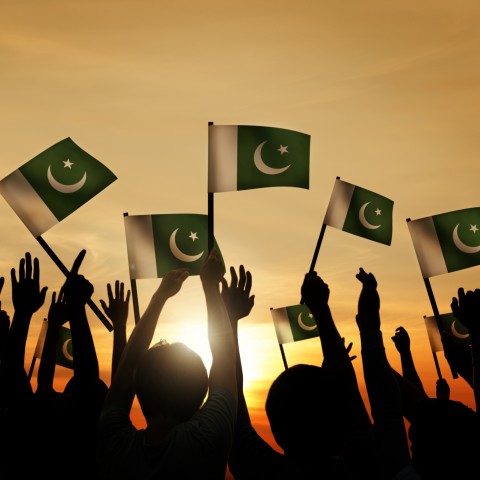
2. Philosophies and Religions
Pakistani culture and traditions are largely influenced by our dominant religions and philosophical ideals. In this section, we’ll discuss the most important information regarding the topics of philosophy and religion in Pakistan.
اسلامی جمہوریہ پاکستان (Islami Jamhooria Pakistan) – The Islamic Republic of Pakistan
Pakistan is an ideological country that attained independence in the name of Islam. Therefore, the country is named after the Islamic religion: اسلامی جمہوریہ پاکستان (Islami Jamhooriya Pakistan).
دو قومی نظریہ (Do Qaumi Nazria) – Two-Nations Theory
At the time of the decolonization of the subcontinent in 1947, Pakistan was encouraged to remain a part of the united sub-continent. However, Pakistanis had already defined their national philosophy in the form of the دو قومی نظریہ (do qomi nazriya), or “two-nations theory.”
This theory states that Muslims are part of a separate nation from the Hindus. Further, it states that Muslims have a different religion, culture, and language from the Hindus, as well as distinct ways of worshipping and living.
The two-nation theory was postulated and popularized by the father of the Pakistani nation, Quaid-e-Azam Muhammad Ali Jinnah.
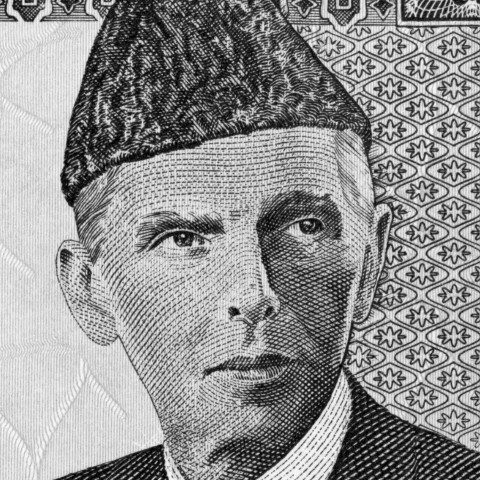
An Ideal Islamic State/Sovereignty of Islam
Since Pakistan was founded on the ideology of Islam, it seeks guidance from the two Islamic sources: the Holy Quran and Hadith. The National Assembly of Pakistan passed the current Constitution of Pakistan on April 10, 1973. The constitution also seeks guidance from the Holy Quran and Hadith, and never contradicts them.
Freedom of Religion for Minorities
Despite being an Islamic state, Pakistan allows minorities to exercise full religious freedom in light of The Constitution of Pakistan. You will also see an inter-religious harmony in Pakistani society, refuting the narratives of fundamentalism.
3. Family and Work
Like in any country, family and work are two integral aspects of daily life in Pakistan. The institution of family, in particular, is a cementing force in Pakistani society. Let’s take a closer look.
A- The Joint Family System
In Pakistani culture, family life is largely centered on the joint family system. According to this system, several generations of a family live together under the same roof, with one person heading the household. While you may also find nuclear families in Pakistan, they are uncustomary and few in number. Nuclear families tend to be more popular in urban areas than in the countryside.
- → Want to expand your vocabulary? Study our lesson Talking About Family in Urdu to learn some practical words and phrases on this topic!
B- Friendship and Unmarried Couples
Because Pakistan is an Islamic country, you will not find opposite-sex friendships here. It is also illegal to move in with someone as a couple or friend if you’re not married to that person.
C- Government vs. Private Sector
Whether it’s a remnant from the Colonial era or due to some other reason, Pakistani people prefer to enter the civil services rather than the private sector in their work. In general, they associate civil services with the sense of security government jobs offer.
D- Work Ethics
In Pakistan, you’ll find that most places have gender segregation. For this reason, there are separate work ethic expectations and protocols for both genders. For example, male employees may be asked to spend extra time at the office while a female employee would not face this situation.
4. Art and Sports
Art is part and parcel of any culture. As such, you would be hard-pressed to find a culture that doesn’t preserve its indigenous arts! Pakistani culture features a rich artistic history, and the country also has a strong presence in the sports world. Take a look.
A- Legacy of Mughal Art
Originating in the sixteenth century, the Mughal dynasty of the Muslim rulers contributed greatly to the cultural art of the sub-continent. After partition from India, Pakistan received a large heritage of Mughal art in different domains. The Mughals encouraged generous patronage to different art forms like music, architecture, painting, and calligraphy.
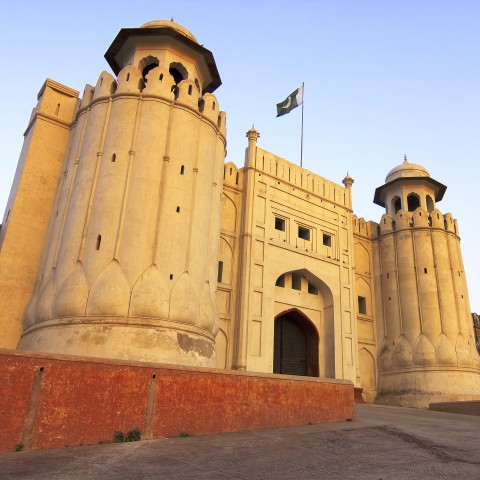
B- Pakistani Music, Dramas, and Movies
After gaining its independence in 1947, Pakistan made great progress in its film, music, and TV industries. The dramas telecasted by the national TV channel of Pakistan (PTV) were widely popular among the neighboring countries because of their strong scripts and high standards of acting. The Pakistani film industry, named Lollywood, has gone through different boom and bane periods and is now struggling to once again raise its standard.
Classical and semi-classical are the most-praised forms of Pakistani music. Pakistan has produced many great names in these genres, including Ustad Mehdi Hasan Khan, Ustad Ghulam Ali Khan, and Madam Noor Jehan.
C- Calligraphy and Painting
Contemporary Pakistani artists have benefited from the legacy left behind by Mughal calligraphy and paintings, and have taken this legacy to the pinnacle of their careers. In the fields of calligraphy and painting, we must mention two names who greatly contributed to these fine arts: Sadequain and Chughtai.
D- Pakistani Literature
Pakistani culture finds its due representation in the domain of Pakistani literature. Pakistan has produced many poets, novelists, and dramatists of worldwide merit. To give you an idea of the most prominent names:
Poets
- Faiz Ahmad Faiz
- Ahmad Faraz
- Muneer Niazi
Short Story Writers
- Saadat Hasan Manto
- Ghulam Abbas
Novelists
- Abdullah Hussain
- Mumtaz Mufti
- Quratul-ain-Haider
Pakistani Literature Written in English
- Taufiq Raffat
- Ahmad Ali
- Mohsin Hamid
- Kamila Shamsi
Be sure to check out our vocabulary list for Talking About Books in Urdu to learn some useful vocabulary!
E- Sports
Pakistanis are a sports-loving people. The average Pakistani is well-built, muscular, and loves physical activities. Hockey is the national sport of Pakistan; nevertheless, cricket is the most popular. Pakistan won the Cricket World Cup in 1992. کبڈی (kabaddi) and کشتی (kushti) are two other indigenous sports of Pakistan, both of them well-loved and often-played throughout the country.
- → See our lesson on Sports to learn some relevant Urdu vocabulary—and to familiarize yourself with the top five sports in Pakistan.
5. Food
Pakistan can be described as a foodie nation. In Pakistani culture, food is considered one of life’s pleasures, and Pakistanis enjoy eating a good meal and arranging food-related festivities. Pakistani cuisine has a long list of specialties! Because we can’t list all of the delicacies here, we’ll just introduce you to the most popular ones.
چکن/مٹن کڑاہی (Chicken/Mutton Karrahi)
To make this dish, the meat is fried right in front of the customer. Tomatoes, onions, ginger, chilis, and lemon are then added, in addition to a variety of spices including: coriander, pepper powder, cumin seeds, and red button chilis.
نهاری (Nihari)
The main ingredients in Nihari are meat, onion, ginger-garlic paste, chili paste, yogurt, and wheat flour. Coriander, cumin, cinnamon, salt, and cardamom give it a special aroma. Lemon and ginger make the best garnishes for this dish.
بریانی (Biryani)
Filled with the aroma of Pakistani Basmati rice, this dish is one of the most popular Desi main courses. To make this dish, rice is boiled in water and then combined with meat and cooked with the following ingredients: green chili paste, ginger-garlic paste, coriander, cumin, yogurt, black pepper, and bay leaf.
حلیم (Haleem)
The meat is cooked while mixing grains and lentils in with it. Spices like cumin, coriander, cardamom, and cinnamon are added later to add flavor and aroma.
چپلی کباب (Chapli Kabab)
This dish consists of minced mutton or beef (with a reasonable amount of fat in it) that is deep-fried in boiling oil. Other ingredients include onion, ginger, garlic, tomato, coriander, and chilis.
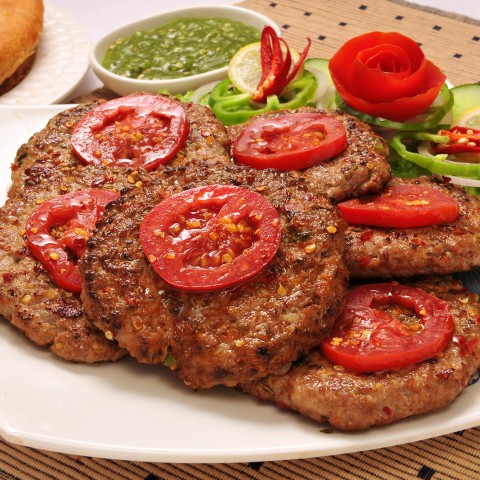
6. Traditional Holidays
While visiting Pakistan, you’ll notice that Pakistanis celebrate many holidays of religious significance. However, there are also a few holidays that are more secular in nature. Let’s take a look.
یومِ آزادی (Youm-e-Azadi) – Independence Day
August 14 is a national holiday to commemorate the Independence Day of Pakistan. The country received its independence on August 14, 1947.عیدین (Eidain)
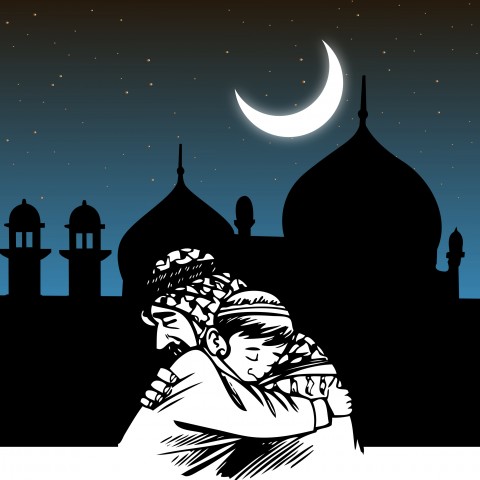
Pakistanis celebrate three عیدین (Eidain), or Eids, at different times of the year.
عیدالفطر (Eid-ul-fitr) is celebrated after the completion of the holy month of Ramadan on the first day of the Islamic month Shawwal. عیدالاضحٰی (Eid-ul-azha) is celebrated on the tenth of Zilhaj. Pakistanis normally get three days of holiday for both of these Eids.
The final Eid celebrates the birthday of the Holy Prophet Hazrat Muhammad (Peace Be Upon Him). This is a public holiday celebrated on the twelfth of the holy month of Rabi-ul-awwal. It’s called عید میلاد النبی (Eid Milad-ul-nabi).
![The Mosque of Holy Prophet Hazrat Muhammad [Peace Be Upon Him]](https://wordlist.languagepod101.com/wordlist/media/24982&v=medium.jpg)
(Ashur)
Ashur is a public holiday celebrated on the tenth of the Islamic month of Moharam to commemorate the martyrdom of Hazrat Imam Hussain, the grandson of the Holy Prophet Hazrat Muhammad (Peace Be Upon Him).
یومِ یکجہتئ کشمیر (Youm-e-Yakjehti E Kashmir) – Kashmir Solidarity Day
Every year on February 5, Pakistanis observe this public holiday to exhibit solidarity with the Indian-occupied Kashmiris and to help them achieve their right of self-determination.
یومِ مزدور (Youm-e-mazdoor) – Labor Day
On May 1, all public and private offices and institutions remain closed.
یومِ پاکستان (Youm-e-Pakistan) – Pakistan Day
March 23 is a national holiday to commemorate the historic achievement of the Muslims of the sub-continent on this particular date in 1940. The Muslims of the sub-continent passed the Resolution of Pakistan on this date at the historical Minto Park Lahore.
7. Conclusion
In this guide to Pakistani culture, you’ve learned a lot of practical information that you can start applying to your language studies or travel plans right away. Did we forget to bring up any particular detail about Pakistan? If you have any questions, feel free to ask us in the comments; we’ll get back to you as soon as possible!
In the meantime, don’t forget to explore UrduPod101.com to benefit from this extremely rich repository of Urdu language learning resources. Here, you’ll have access to a variety of useful Urdu linguistic resources, including an Urdu dictionary, pronunciation tips, vocabulary lists, and grammar lessons. We also aim to include practical cultural information in each of our lessons, so you can get a more immersive learning experience.
Very Happy Urdu Learning!



